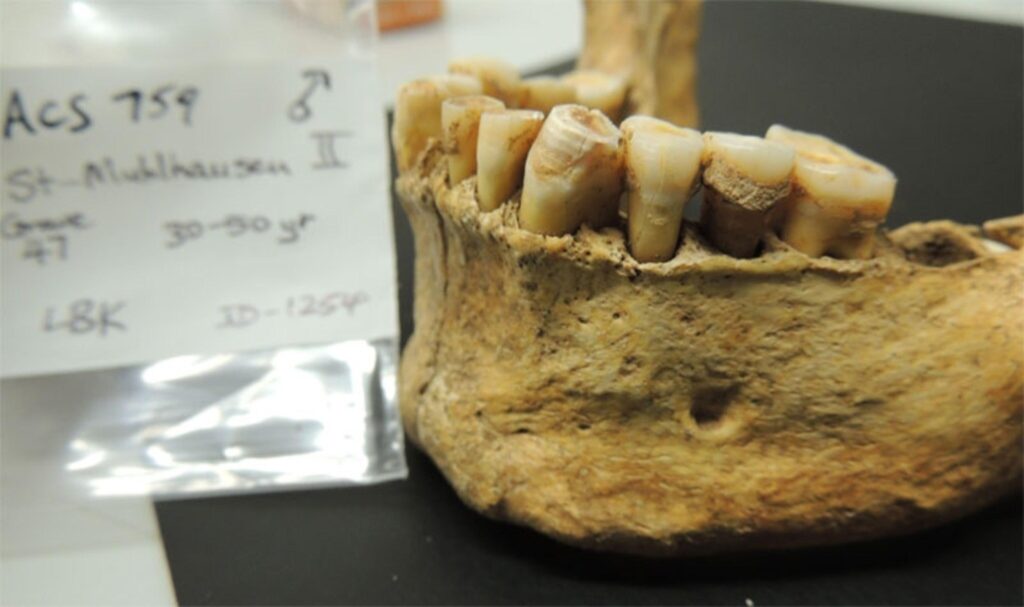Recent analyses of ancient dental plaque are providing unprecedented insights into the daily lives and diets of prehistoric populations. Researchers examining calcified plaque samples have uncovered microfossils, chemical residues, and microorganisms that reveal not only what these early humans ate but also their health, environment, and cultural practices. This emerging field of study is transforming our understanding of ancient lifestyles, bridging gaps left by traditional archaeology. In this report, we explore how dental calculus is becoming a valuable archive for reconstructing the habits and habitats of our distant ancestors.
Ancient Dental Plaque Reveals Dietary Habits of Prehistoric Communities
Recent analysis of mineralized dental plaque, or calculus, recovered from prehistoric human remains has opened a fascinating window into the nutritional choices and environmental adaptations of ancient populations. Scientists employed advanced microscopy and DNA sequencing techniques to identify microfossils, starch granules, and bacterial DNA preserved within this hardened biofilm. The findings reveal a diverse diet that extended beyond mere hunting and gathering, including early forms of agriculture, consumption of wild tubers, and seasonal exploitation of aquatic resources.
Among the remarkable discoveries, researchers documented several outstanding dietary components, as summarized below:
- Plant-based Foods: Evidence of ancient grains such as barley and millet, as well as wild nuts and seeds.
- Animal Proteins: Residues from fish, small mammals, and even insects pointing to a broad subsistence strategy.
- Medicinal Plants: Traces of natural compounds suggesting early knowledge of herbal remedies.
| Dietary Category | Representative Findings | Significance |
|---|---|---|
| Grains | Barley, Millet | Indicates proto-agriculture |
| Protein Sources | Fish Scales, Rodent Hair | Diverse hunting/fishing practices |
| Herbs | Plant Alkaloids | Early medicinal use |
Microscopic Analysis Uncovers Health and Hygiene Practices of Early Humans
Recent microscopic examinations of ancient dental plaque, known as calculus, have provided unprecedented insight into the daily habits and health practices of early humans. By analyzing trapped microfossils, food particles, and microbial DNA, researchers can reconstruct diets, detect medicinal plant use, and uncover early techniques of oral hygiene. Microscopic residues reveal that prehistoric diets were rich not only in fibrous plants and meat but also included spices and herbal compounds used for therapeutic purposes. These findings challenge long-held assumptions about primitive human nutrition and suggest a sophisticated understanding of natural remedies.
Beyond diet, the calculus analysis has also uncovered evidence pointing to early forms of tooth cleaning and possible infection control strategies, shedding light on health care practices thousands of years ago. Among the fascinating discoveries are:
- Microscopic fragments of toothpicks and plant fibers consistent with mechanical plaque removal
- Traces of antimicrobial compounds derived from tree resins and aromatic herbs
- Signs of microbial shifts indicative of early oral disease management
| Element | Evidence Found | Significance | ||||||||||||||||||||||
|---|---|---|---|---|---|---|---|---|---|---|---|---|---|---|---|---|---|---|---|---|---|---|---|---|
| Plant microremains | Seeds, fibers, pollens | Diet variety and medicinal use | ||||||||||||||||||||||
| Resin compounds | Birch bark tar traces | Antimicrobial properties | ||||||||||||||||||||||
| Microbial DNA | Bacteria patterns |
| Element | Evidence Found | Significance | |||||||||||
|---|---|---|---|---|---|---|---|---|---|---|---|---|---|
| Plant microremains | Seeds, fibers, pollens | Diet variety and medicinal use | |||||||||||
| Resin compounds | Birch bark tar traces | Antimicrobial properties | |||||||||||
| Microbial DNA |
Experts Urge Integration of Dental Archaeology in Understanding Human EvolutionLeading researchers in the field emphasize that the integration of dental archaeology offers an unprecedented window into the daily lives of prehistoric humans. By analyzing the residues trapped in ancient dental plaque, scientists can reconstruct not only diets but also habitual behaviors, environmental interactions, and even social practices that shaped human evolution. This multidisciplinary approach merges archaeology, microbiology, and evolutionary biology to paint a richer, more accurate picture of our ancestors’ existence. Key insights gained from dental calculus studies include:
Insights and ConclusionsAs researchers continue to decode the microscopic remnants preserved in ancient dental plaque, new windows into the diets, health, and habits of prehistoric populations are opening. This emerging field not only enriches our understanding of human evolution but also highlights the intricate connections between early humans and their environments. With each discovery, the story of our ancestors becomes clearer, reminding us that even the smallest traces can reveal the largest insights into the past. |
